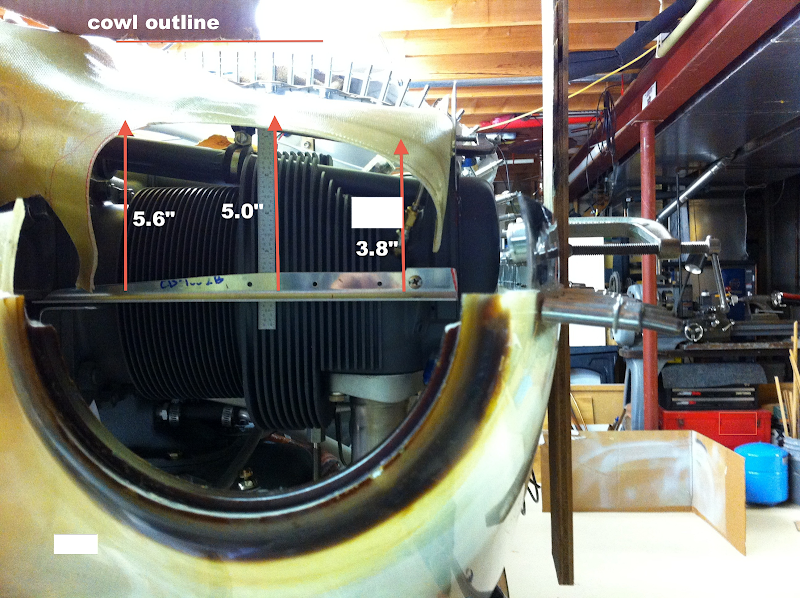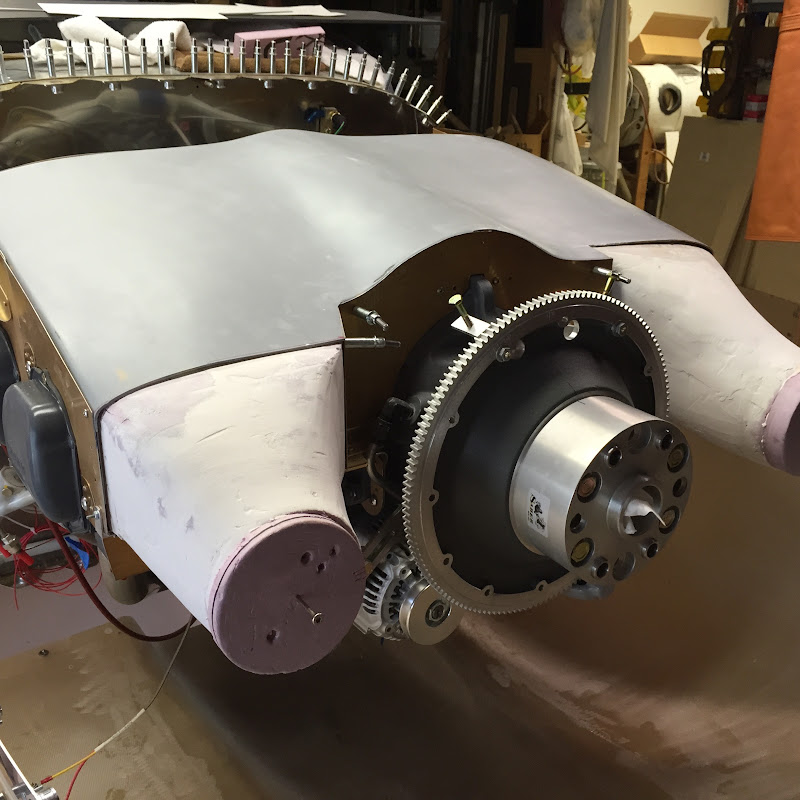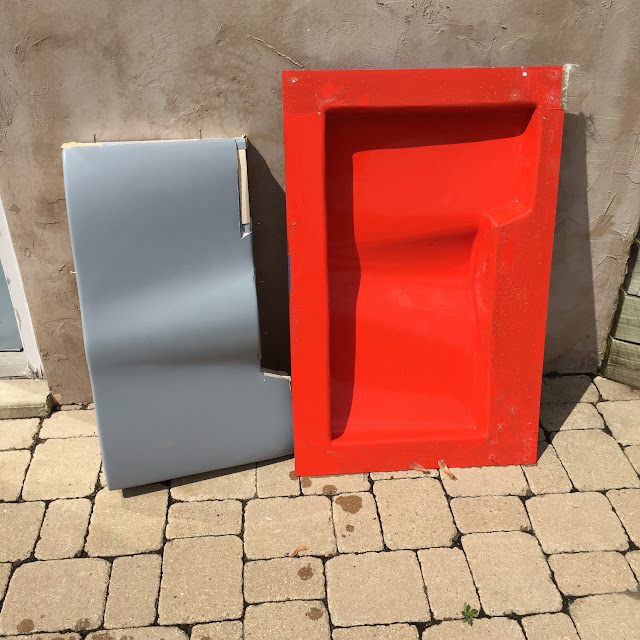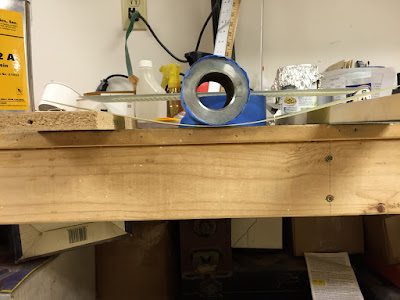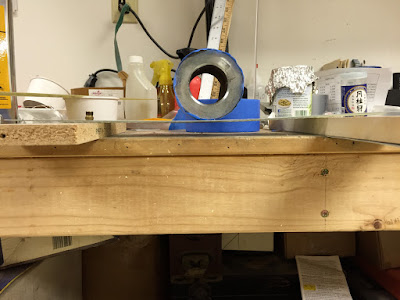BillL
Well Known Member
I posted this in the SJ cowl Plenum thread, and got no response, so I will try the direct approach.
So, I have fitted the cowl with SB fasteners and glassed the inlet rings. SJ builders, please read below and tell me what you would do or did differently. After rebuilding the back flange, I will cut off the front inlets, make some from styrofoam, and re-glass them to fit properly against the forward heads. Also allow for a gradual expansion of inlet air. I really need some experienced opinions here.
Not addressed yet is the fact that 1/3 of the oil cooler is blocked with the rear at this plenum cover level and I have not formulated the details of how to fix that yet.
The baffles have been trial fitted on side and back, but before getting into the fitting at the front of the engine I searched and studied and even cut out the SJ templates. In order to understand the baffles, I got the Lycoming engine installation drawing and used it to overlay the baffles and understand what the exact dimensions are for the Vans baffles.
To begin - the SJ plenum is a "universal fit", it does not fit anything. I have an early one, but Sam says the new ones are the same. I am not going to argue with him.
Here is a box built with the exact dimensions expected to fit the engine. It is parallel, spark plug locations provide a good datum for fore/aft locations. Inserted is the SJ plenum. There are a couple of dimensions on the plenum that are good, the side span is perfect and parallel, the forward contour fit to the case is pretty good. The back is bad, are the air inlets are bad. Not shown is that the height above the heads is the same as measured at the center of each head (inline with plug 2" above valve covers).
I used the contour and the plug locations to affix the engine. The contour is tight against the from of the case and down as low as it can go. The inside flow area is 2 inches above the top of the valve covers. Meaning, it can not go lower or I runout of cooler flow area and risk possible air flow throttling at the inlet over the front head/cylinders.
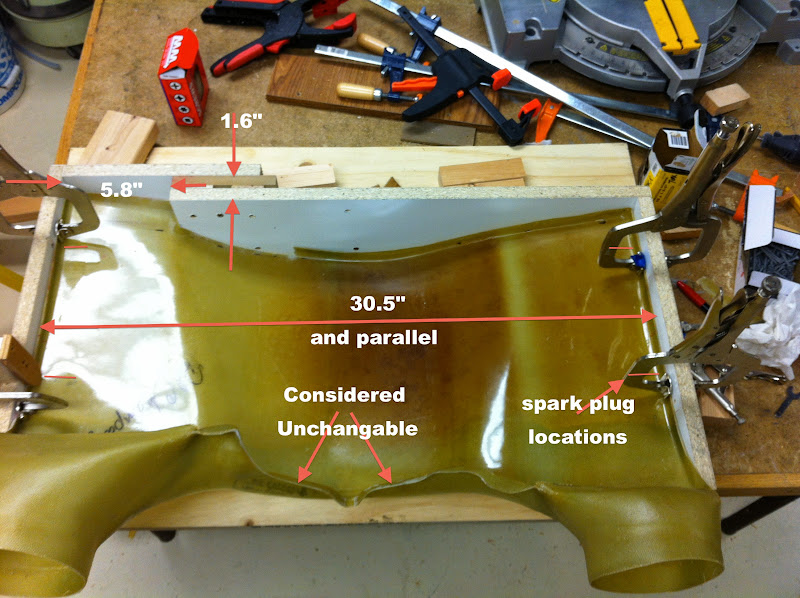
Here is the back - and how the original glass does not follow the baffles. it is off in every way. I will cut off the flange and re-glass that.
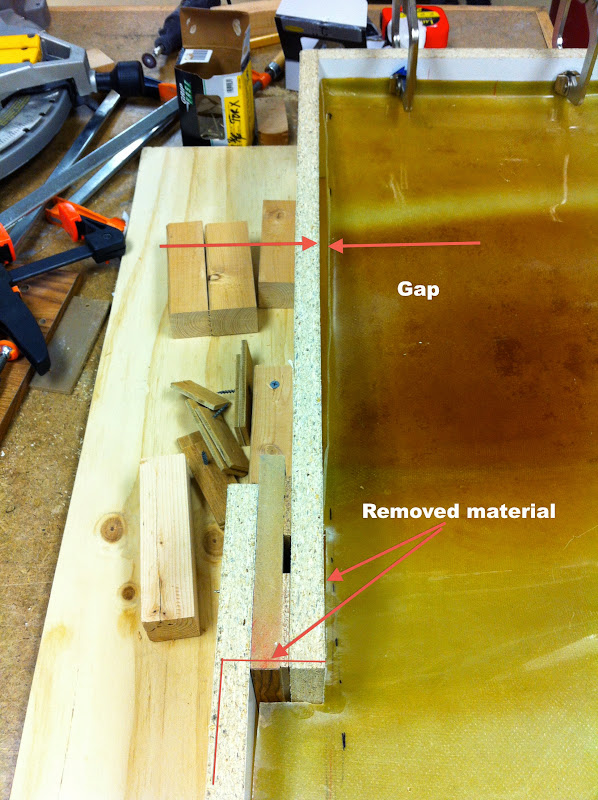
Here is the left and right view of where the inlet snouts "match" to the forward baffles. There is a significant gap on both sides. The left side inlet is centered with the cowl, the right is 1/2" low. it can not be moved anyway with the other constraints.
Right side -
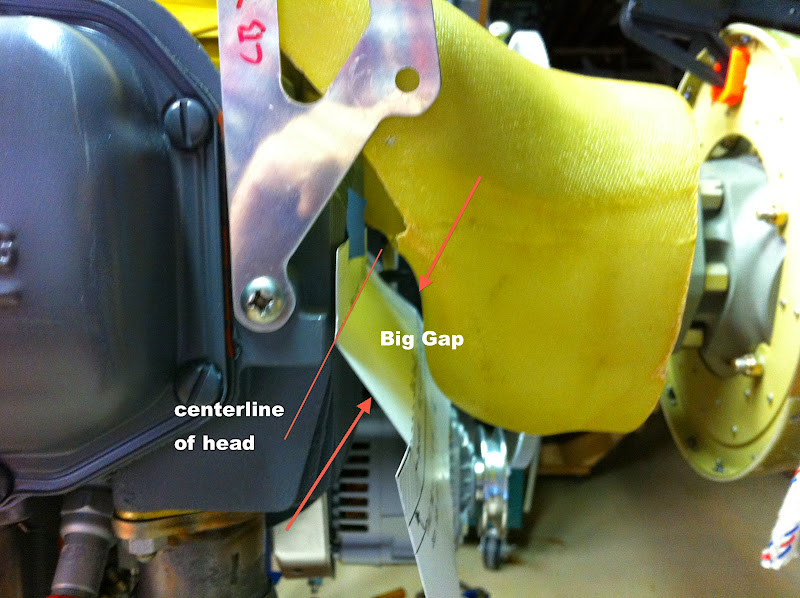
Left:
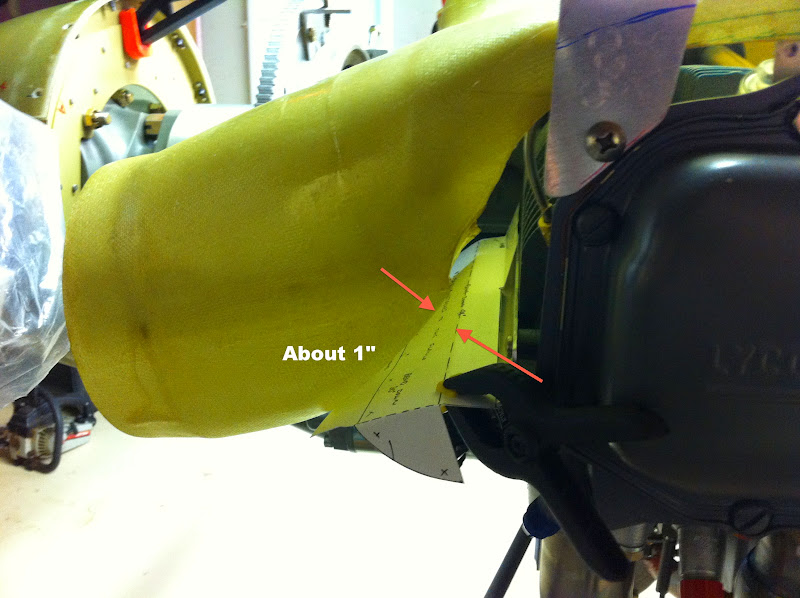
EDIT - I did look at HydroGuy's, RonDuren, and Mike Bullocks pictures. Rupsters posts had some good pictures too, but he has a 320. All of these contributed immensely to my understanding. I also looked at ALL pictures on the yahoo SJ group. These are just ill fitting parts, and I would suggest making your own.
So, I have fitted the cowl with SB fasteners and glassed the inlet rings. SJ builders, please read below and tell me what you would do or did differently. After rebuilding the back flange, I will cut off the front inlets, make some from styrofoam, and re-glass them to fit properly against the forward heads. Also allow for a gradual expansion of inlet air. I really need some experienced opinions here.
Not addressed yet is the fact that 1/3 of the oil cooler is blocked with the rear at this plenum cover level and I have not formulated the details of how to fix that yet.
The baffles have been trial fitted on side and back, but before getting into the fitting at the front of the engine I searched and studied and even cut out the SJ templates. In order to understand the baffles, I got the Lycoming engine installation drawing and used it to overlay the baffles and understand what the exact dimensions are for the Vans baffles.
To begin - the SJ plenum is a "universal fit", it does not fit anything. I have an early one, but Sam says the new ones are the same. I am not going to argue with him.
Here is a box built with the exact dimensions expected to fit the engine. It is parallel, spark plug locations provide a good datum for fore/aft locations. Inserted is the SJ plenum. There are a couple of dimensions on the plenum that are good, the side span is perfect and parallel, the forward contour fit to the case is pretty good. The back is bad, are the air inlets are bad. Not shown is that the height above the heads is the same as measured at the center of each head (inline with plug 2" above valve covers).
I used the contour and the plug locations to affix the engine. The contour is tight against the from of the case and down as low as it can go. The inside flow area is 2 inches above the top of the valve covers. Meaning, it can not go lower or I runout of cooler flow area and risk possible air flow throttling at the inlet over the front head/cylinders.

Here is the back - and how the original glass does not follow the baffles. it is off in every way. I will cut off the flange and re-glass that.

Here is the left and right view of where the inlet snouts "match" to the forward baffles. There is a significant gap on both sides. The left side inlet is centered with the cowl, the right is 1/2" low. it can not be moved anyway with the other constraints.
Right side -
Left:
EDIT - I did look at HydroGuy's, RonDuren, and Mike Bullocks pictures. Rupsters posts had some good pictures too, but he has a 320. All of these contributed immensely to my understanding. I also looked at ALL pictures on the yahoo SJ group. These are just ill fitting parts, and I would suggest making your own.



